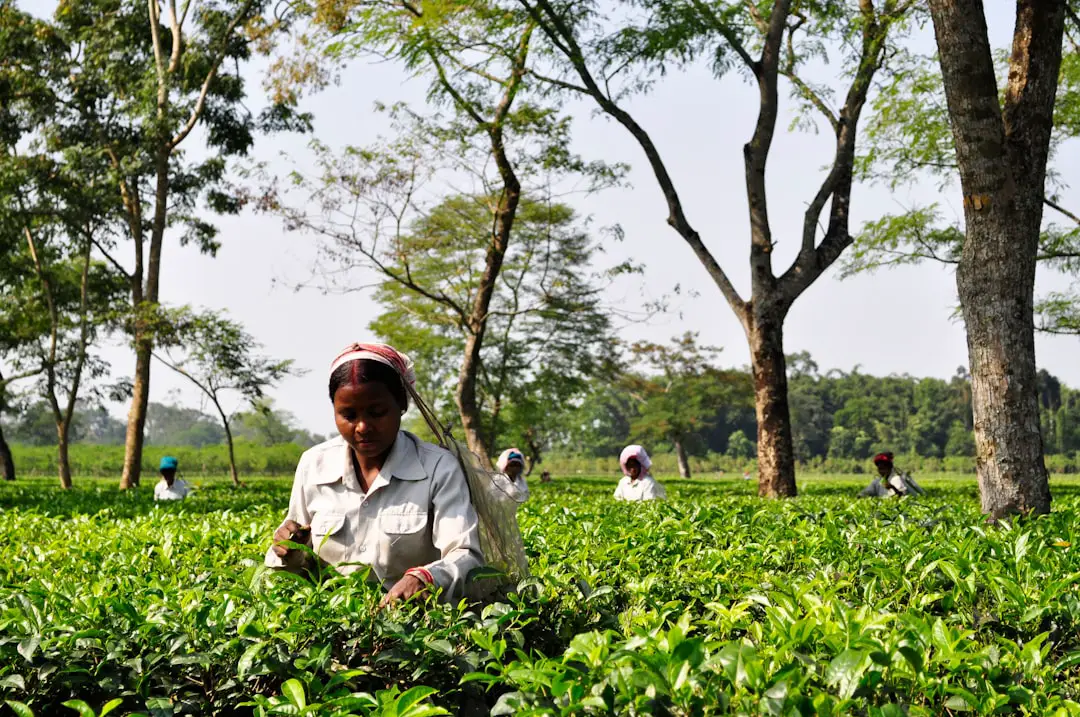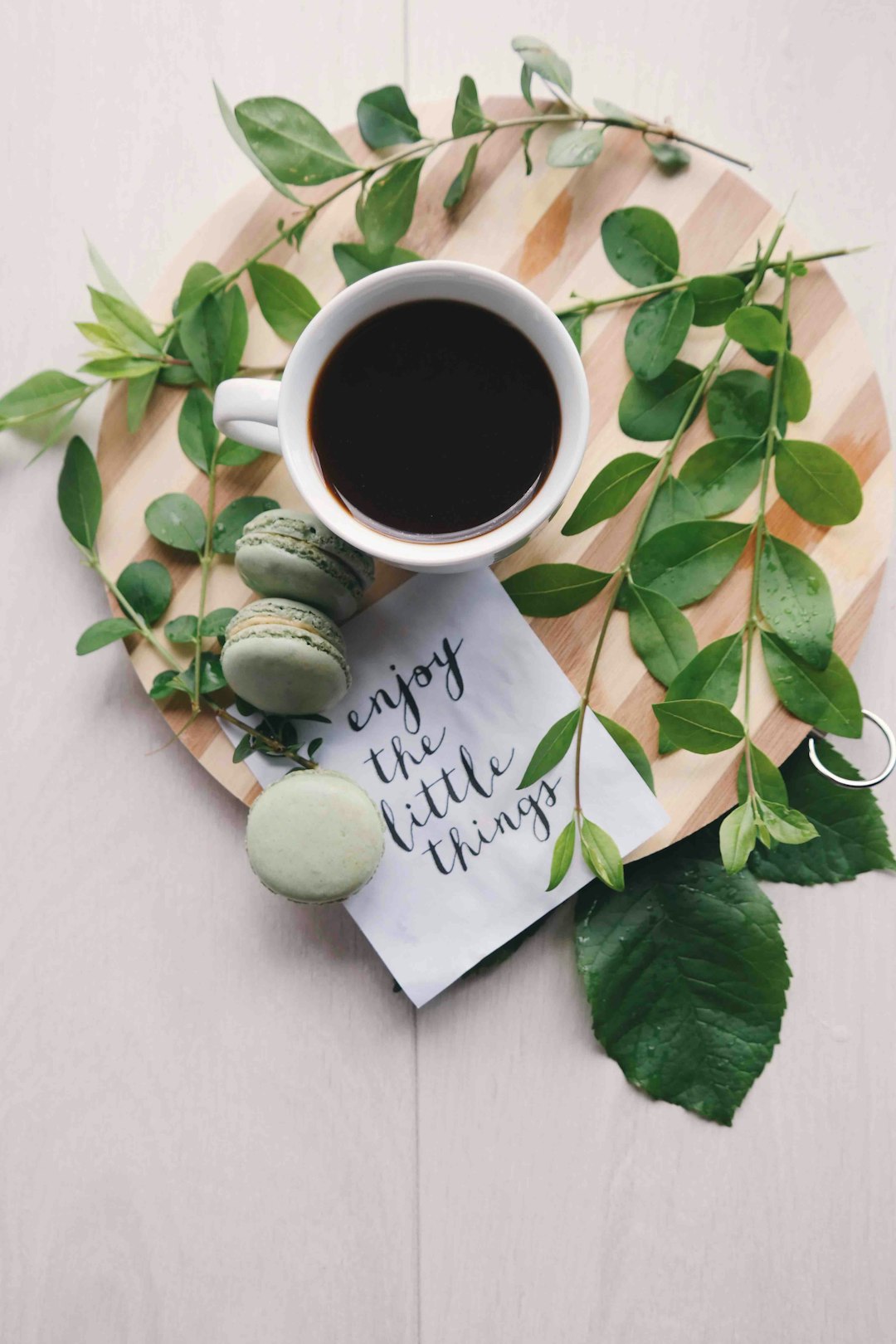Support our educational content for free when you purchase through links on our site. Learn more
🌱 Growing Teas: 12 Essential Tips for Home Cultivation [2025]
Welcome to the wonderful world of growing teas! Did you know that tea is the second most consumed beverage in the world, right after water? 🌍 Whether you’re a seasoned gardener or just dipping your toes into the green thumb lifestyle, cultivating your own tea can be an incredibly rewarding experience. Imagine sipping a freshly brewed cup of tea made from leaves you nurtured yourself! In this article, we’ll explore 12 essential tips that will help you grow a variety of tea plants, from classic black and green teas to delightful herbal blends.
But wait—what if I told you that the right soil and climate conditions can make or break your tea-growing journey? Stick around as we delve into the intricacies of tea cultivation, blending, and brewing, ensuring that you have all the knowledge you need to create your own tea paradise!
Key Takeaways
- Variety Matters: Different tea types require specific cultivation techniques; know your plants!
- Soil and Climate: Tea thrives in well-draining, acidic soil and a humid climate.
- Health Benefits: Homegrown tea is packed with antioxidants and can improve overall wellness.
- Blending Techniques: Experiment with flavors to create unique tea blends that suit your palate.
- Sustainable Practices: Consider organic farming and rainwater harvesting for eco-friendly cultivation.
Ready to start your tea-growing adventure? 👉 Shop tea plants and supplies on Amazon or Burpee! 🌿
Table of Contents
- Quick Tips and Facts
- The Rich History of Tea Cultivation
- Understanding Tea: Types and Varieties
- Cultivation Techniques for Growing Teas
- The Art of Blending Teas for Unique Flavors
- Brewing the Perfect Cup: Techniques and Tips
- Health Benefits of Tea: What Science Says
- The Science Behind Caffeine in Tea
- Exploring Green Tea Catechins: Health Boosters
- Sustainable Practices in Tea Cultivation
- Tea Culture Around the World: A Global Perspective
- Innovative Trends in the Tea Industry
- Conclusion
- Recommended Links
- FAQ
- Reference Links
Quick Tips and Facts
To get started with growing your own tea, check out our related article about 10 Essential Tips to Grow Camellia Sinensis Indoors in 2025. Here are some quick tips and facts to consider:
- Tea Plant Varieties: There are many varieties of tea plants, including Camellia sinensis var. sinensis and C. s. var. assamica.
- Cultivation Requirements: Tea plants require at least 127 cm (50 in) of rainfall per year and prefer rich, moist soil and full to part sun.
- Health Benefits: Tea has numerous health benefits, including antioxidant and anti-inflammatory properties. Learn more about the Health Benefits of Tea.
- Tea Cultivation: Tea cultivation involves planting, harvesting, and processing tea leaves. Check out our category on Green Tea Cultivation for more information.
Types of Tea
There are several types of tea, including:
- Black tea
- Green tea
- White tea
- Oolong tea
- Herbal tea
The Rich History of Tea Cultivation

Tea cultivation has a rich history that dates back thousands of years. According to Wikipedia, tea plants are native to East Asia and were first cultivated in China. Today, tea is grown in many countries around the world, including India, Japan, and Kenya.
Origins of Tea
The origins of tea are not well documented, but it is believed that tea was first consumed in China over 4,000 years ago. From there, tea spread to other parts of Asia, including Japan and India, where it became an important part of the culture.
Understanding Tea: Types and Varieties
There are many types and varieties of tea, each with its own unique characteristics and flavor profiles. Some popular types of tea include:
- Black Tea: Black tea is fermented, which gives it a strong flavor and dark color. Learn more about Herbal Tea Planting.
- Green Tea: Green tea is steamed or pan-fried, which helps preserve its antioxidants and gives it a light flavor.
- White Tea: White tea is made from the young buds of the tea plant and is minimally processed, which helps preserve its delicate flavor and nutrients.
Tea Varieties
There are many varieties of tea, including:
- Assam Tea: Assam tea is a type of black tea that is grown in the Assam region of India. It is known for its strong flavor and malty taste.
- Darjeeling Tea: Darjeeling tea is a type of black tea that is grown in the Darjeeling region of India. It is known for its light flavor and floral aroma.
Cultivation Techniques for Growing Teas
Growing tea requires careful attention to detail and a deep understanding of the plant’s needs. Here are some cultivation techniques to consider:
- Soil and Climate: Tea plants prefer well-draining soil and a cool, humid climate. Learn more about Soil and Climate for Tea.
- Pruning: Pruning is an important part of tea cultivation, as it helps to promote healthy growth and prevent disease.
- Pest Control: Tea plants can be susceptible to pests, such as aphids and whiteflies. Learn more about DIY Tea Blending.
Tea Plant Care
Tea plants require regular care to stay healthy and thrive. This includes:
- Watering: Tea plants need consistent moisture, especially when they are young.
- Fertilization: Tea plants benefit from regular fertilization, especially during the growing season.
The Art of Blending Teas for Unique Flavors
Blending teas is an art that requires a deep understanding of the different flavor profiles and characteristics of various teas. Here are some tips for blending teas:
- Start with a Base Tea: Choose a base tea that will provide the foundation for your blend.
- Add Flavorings and Herbs: Add flavorings and herbs to create a unique and complex flavor profile.
- Experiment and Adjust: Experiment with different blends and adjust to taste.
Tea Blending Techniques
There are many techniques for blending teas, including:
- Layering: Layering involves combining different teas in a specific order to create a unique flavor profile.
- Matching: Matching involves pairing teas with similar flavor profiles to create a harmonious blend.
Brewing the Perfect Cup: Techniques and Tips
Brewing the perfect cup of tea requires attention to detail and a deep understanding of the tea’s characteristics. Here are some techniques and tips to consider:
- Water Temperature: Use fresh, filtered water at the right temperature for the type of tea you are brewing.
- Steeping Time: Steep the tea for the right amount of time to bring out the desired flavor and aroma.
- Tea Leaves: Use high-quality tea leaves that are fresh and have not been compromised by air, moisture, or light.
Tea Brewing Methods
There are many methods for brewing tea, including:
- Steeping: Steeping involves immersing the tea leaves in hot water and allowing them to steep for a specified amount of time.
- Infusing: Infusing involves placing the tea leaves in a tea infuser or strainer and allowing them to steep in hot water.
Health Benefits of Tea: What Science Says
Tea has numerous health benefits, including antioxidant and anti-inflammatory properties. According to Healthline, tea may help to:
- Reduce Risk of Heart Disease: Tea may help to reduce the risk of heart disease by lowering blood pressure and cholesterol levels.
- Improve Cognitive Function: Tea may help to improve cognitive function and reduce the risk of age-related cognitive decline.
Tea and Antioxidants
Tea is rich in antioxidants, which may help to protect against cell damage and reduce the risk of chronic diseases. Learn more about the Health Benefits of Tea.
The Science Behind Caffeine in Tea
Caffeine is a stimulant that is found in tea, as well as other plants. According to Science Daily, caffeine may have both positive and negative effects on the body, depending on the amount consumed.
Caffeine and Tea
The amount of caffeine in tea can vary depending on the type of tea, the amount of tea leaves used, and the steeping time. On average, a cup of tea contains between 25-40 milligrams of caffeine.
Exploring Green Tea Catechins: Health Boosters
Green tea catechins are a type of antioxidant that is found in high amounts in green tea. According to WebMD, green tea catechins may have numerous health benefits, including:
- Reducing Risk of Heart Disease: Green tea catechins may help to reduce the risk of heart disease by lowering blood pressure and cholesterol levels.
- Improving Cognitive Function: Green tea catechins may help to improve cognitive function and reduce the risk of age-related cognitive decline.
Green Tea and Antioxidants
Green tea is rich in antioxidants, including catechins, which may help to protect against cell damage and reduce the risk of chronic diseases.
Sustainable Practices in Tea Cultivation
Sustainable practices in tea cultivation are essential for ensuring the long-term health of the environment and the tea plants. Here are some sustainable practices to consider:
- Organic Farming: Organic farming involves using natural methods to control pests and diseases, rather than synthetic chemicals.
- Rainwater Harvesting: Rainwater harvesting involves collecting and storing rainwater for use in irrigation and other farm activities.
Sustainable Tea Farming
Sustainable tea farming involves using practices that minimize the impact on the environment and promote biodiversity. Learn more about Green Tea Cultivation.
Tea Culture Around the World: A Global Perspective
Tea culture varies around the world, with different countries and regions having their own unique traditions and customs. Here are some examples:
- Japanese Tea Culture: Japanese tea culture is known for its emphasis on simplicity, respect, and harmony with nature.
- Indian Tea Culture: Indian tea culture is known for its rich and diverse traditions, with different regions having their own unique tea-making customs.
Tea and Community
Tea has a way of bringing people together, whether it’s through a traditional tea ceremony or a casual gathering with friends. Learn more about Herbal Tea Planting.
Innovative Trends in the Tea Industry
The tea industry is constantly evolving, with new trends and innovations emerging all the time. Here are some examples:
- Specialty Teas: Specialty teas, such as matcha and chai, are becoming increasingly popular.
- Tea-Based Beverages: Tea-based beverages, such as tea lattes and tea smoothies, are becoming increasingly popular.
Tea and Technology
Technology is playing an increasingly important role in the tea industry, from tea production to tea sales. Learn more about DIY Tea Blending.
Conclusion

Growing your own tea can be a rewarding and enriching experience! From the rich history of tea cultivation to the art of blending and brewing, we’ve covered a lot of ground. With the right techniques, you can cultivate a variety of tea plants, enjoy the health benefits they offer, and even create unique blends that suit your taste.
Summary of Positives and Negatives
Positives:
- Health Benefits: Tea is packed with antioxidants and has numerous health benefits.
- Variety: You can grow different types of tea plants, including black, green, and herbal teas.
- Sustainability: Growing your own tea promotes sustainable practices and reduces your carbon footprint.
Negatives:
- Time-Consuming: Cultivating tea requires patience and dedication.
- Climate Requirements: Not all climates are suitable for growing tea, which can limit your options.
In conclusion, we confidently recommend diving into the world of tea cultivation. Whether you’re a seasoned gardener or just starting out, the journey of growing tea is sure to be fulfilling. So grab your gardening gloves and get started! 🌱
Recommended Links
FAQ

What are the best tea plants for home cultivation?
Best Tea Plants
- Camellia sinensis: The primary tea plant used for all traditional teas.
- Herbal Varieties: Consider growing peppermint, chamomile, and lemon balm for herbal teas.
Read more about “🌱 10 Essential Tips to Grow Camellia Sinensis Indoors in 2025”
What climate conditions are needed to grow tea successfully?
Climate Conditions
Tea plants thrive in tropical and subtropical climates. They prefer:
- Temperature: 60°F to 85°F (15°C to 29°C).
- Humidity: High humidity levels (around 70%).
- Rainfall: At least 127 cm (50 in) of rainfall per year.
How do I propagate tea plants?
Propagation Methods
- Seeds: Start from seeds, which can take longer to germinate.
- Cuttings: Take cuttings from healthy plants and root them in moist soil.
Read more about “Growing Tea from Seed: 10 Essential Tips for Success 🌱 …”
What kind of soil is best for growing tea?
Soil Requirements
Tea plants prefer well-draining, acidic soil with a pH of 5.5 to 6.5. A mix of peat moss, compost, and perlite works well.
Read more about “What Climate Zones Are Best for Growing Tea Plants in the US? 🌱”
How often should I water my tea plants?
Watering Frequency
Water your tea plants regularly, allowing the soil to dry slightly between waterings. During hot weather, you may need to water more frequently.
Read more about “How Many Years Does It Take to Grow Tea? 🌱 5 Essential Insights …”
What are common pests and diseases that affect tea plants?
Pests and Diseases
- Common Pests: Aphids, spider mites, and whiteflies.
- Diseases: Leaf blight and root rot. Regular monitoring and organic pesticides can help manage these issues.
Read more about “How Long Does It Take to Grow a Tea Plant? 🌱 10 Essential Insights …”
When and how should I harvest tea leaves?
Harvesting Tips
- Timing: Harvest young leaves and buds every 1-2 weeks during the growing season.
- Technique: Use sharp scissors to cut the top 2-3 leaves and the bud.
Read more about “What Tea Can You Grow at Home? 10 Varieties to Try! 🍃 …”
How do I process tea leaves after harvesting them from my garden?
Processing Steps
- Withering: Lay leaves out to wilt for several hours.
- Rolling: Roll the leaves to release their juices.
- Oxidizing: Allow leaves to oxidize for black tea or skip this step for green tea.
- Drying: Dry leaves in a dehydrator or in the sun until completely dry.
Read more about “Grow Your Own Herbal Tea: 7 Essential Tips for Success 🌿 …”
Can I grow tea indoors?
Indoor Growing
Yes! Tea plants can be grown indoors in pots. Ensure they receive plenty of light (ideally 6 hours of sunlight daily) and maintain humidity.
Read more about “Does Growing Tea Require a Lot of Water? 7 Essential Insights 🌱”
How long does it take for a tea plant to mature and produce leaves?
Maturity Timeline
Tea plants typically take 3-5 years to mature enough for harvesting. However, younger leaves can be used for herbal teas sooner.
Reference Links
- Wikipedia – Camellia sinensis
- Healthline – Benefits of Tea
- Fifth Season Gardening – Growing, Blending, and Brewing Herbal Teas
- Science Daily – Caffeine in Tea
By following these guidelines and utilizing the resources provided, you’ll be well on your way to becoming a tea-growing aficionado! Happy gardening! 🍃



